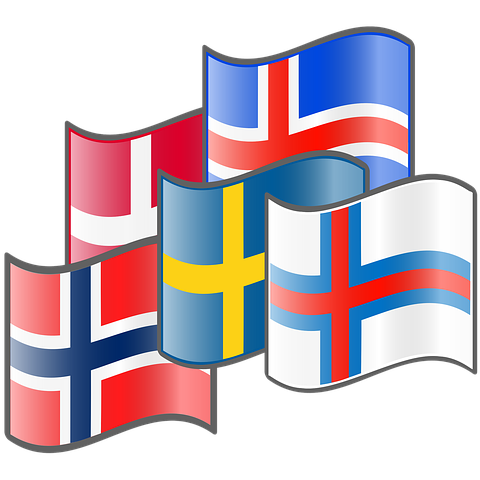In the wake of Russia Ukraine invasion of Ukraine, so mucn anxiety has gripped Scandinavians. Whether the anxiety and pensivenes in the Scandinavians is out of actual threat or anything else could be subject of discussion. However, at such uncertain times and Russia being just next door, anyone may fear for own life. Therefore, knowng something about the Nordic Defense Cooperation could be reassuring.
The scenes of Ukrainians tropping into Scnandvian countries to seek refuge hasn’t been an easy one for many. Yes, the feeing Ukrainians have so far received so much support and continue on the to rebuilding their lives over again. Although not a one hundred percent guarantee of safety, the defence cooperation at least gives a sense of solace.
A little historical context to the Nordic Defense Cooperation
The second half of the 20th century birthed Nordic cooperation. This cooperation brings together Iceland, Denmark, Sweden, Finland, and Norway. It is presumable that through a Nordic common history, they achieved such. The five countries got more collaborative in various undertakings at the beginning but seemingly not on defense and security. It is only after post-war times that Nordics had to key in the latter purpose. Thus, the introduction of Nordic Defense Cooperation (NORDEFCO).
While many regard Nordic security as crime and militarily safe, there is a lot more than what meets the eye. The whole agenda is a wide topic with impressive ideas that will leave your mouth open. Maybe you least expected issues like cyber threats, terror, or even climate change to appear on that list. But well, those and others like civil security are what define Nordic defense and security, so to say.
Nordic defense union
For the records, the Nordic cooperation was a notable formation after the postwar period. To start it off, Norway Denmark, and Iceland created a membership in NATO, apparently to mark a Nordic defense union. The surprising part is Finland and Sweden, which kept aloof but expected to remain under the union’s umbrella. Even though the two have been strong participants in NATO, they were locked out of the treaty of mutual security guarantee. It is just recently that they seem on the move to join it.
With intensified military co-operations, making it to a whole new level, NORDEFCO fully steered towards Nordic security and defense. Although NORDEFCO aims at promoting defense in all five countries, it is undoubted that its major cooperation is the initial NATO members. So before we get a look into the objectives of the Cooperation, let us briefly describe its structure.
How the Structure of NORDEFCO Looks Like
Through this so-called NORDEFCO organizational scope, non-Nordic countries are allowed in. But only in fields where they are certain to add value. Besides, they are good to go as long as they have a thing or two to contribute in weighty matters like- joint actions and cost-sharing. You can now clearly see that even though the martial aspect is a concern in NORDEFCO it is not the core of it all.
Although the organizational hierarchy of NORDEFCO may appear complex, it is split into political and military wings. Majorly to help you understand it better. Primarily, there are Nordic Ministers of defense right at the top of the political level. The group meets up twice a year and all of their activities are dependent on Political Steering Committee.
You are probably wondering what the committee is all about right? Well, Policy Steering Committee (PSC) is made up of a secretariat and other subcommittees to deal with issues of policy, armament, and operations. And PSC is a good representation of the NORDEFCO member states mainly handling the senior-most of departmental officers. The like of policy and military coordination committee that represents the country’s chief of defense.
So then, the MCC amasses with Nordic National Armaments Directors at the military level, and such a gathering is once a year. The team works closely with the chief of defense to develop staffing and suggest agendas in the cooperation areas. As I mentioned earlier, the cooperation areas deal with armaments, operations, education, Human resource, and training among others.
The Aims and Objectives of the Nordic Defense Cooperation
As true as expected, the NORDEFCO greatly aims towards extended integration and swift realization of becoming NATO allies. From the outlook, it has something to do with molding a more sustainable and integrated Nordic region in the future. Apart from co-operations on air defense that borders logistics, NORDEFCO does conduct training, which is perfectly linked to NATO and its allies.
Again, there is a ‘silent’ mention of a harmonized plan to befit the NATO defense plan. If you thought that is all then come to think of the joint effort to artificially, create a resilient society in Nordic. Probably wondering how they do that, and quite simple too.
Okay, Nordics are smart upstairs. You won’t believe that sharing situational awareness and even forming a block to fend off outside threats has made them through. So after learning the focus of the NORDEFCO, nothing can stop us from exploring its ups and limitations.
The Common Pros and Cons of Nordic Defense Cooperation
Obviously, none will fail to admire the Nordics for this awesome idea of coming up with cost-friendly cooperation. For arising matters to do with let’s say a defense budget in the Nordic community, NORDEFCO got you. Even concerns to do with a global crisis like environmental situations are well looked into. Don’t tell me you couldn’t notice the wonderful blend of work-together-with with NATOs and the EU rather than competing with them.
On the contrary, the challenge of joint procurement and material acquisition has been and may stay for days to come. Talk of the case of Sweden that opted for the ‘Gripen’ made by a Swedish aircraft manufacturer that really caused uproar in the cooperation. The same happened when Finland replaced its old fighters and ‘Gripen’ too.

